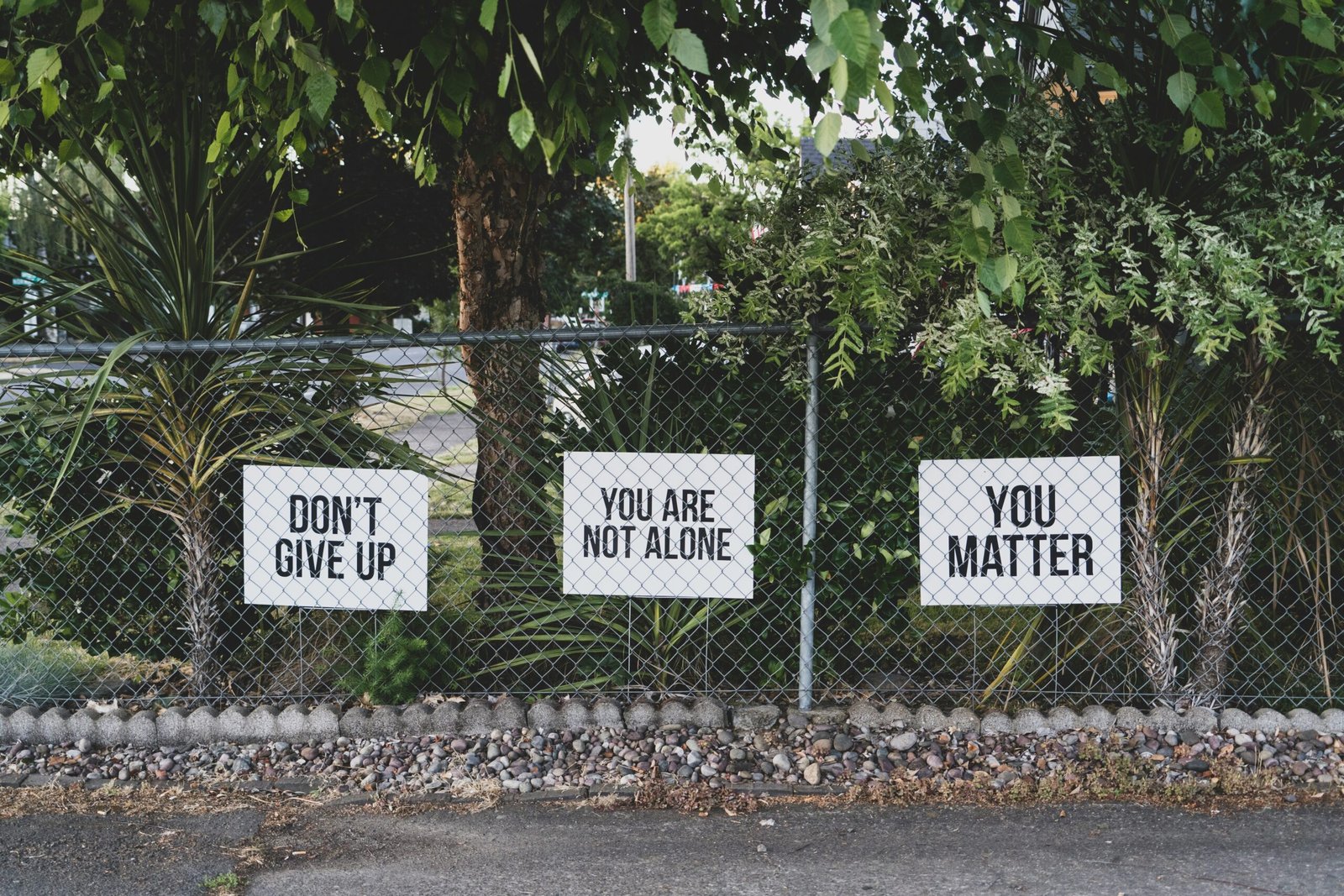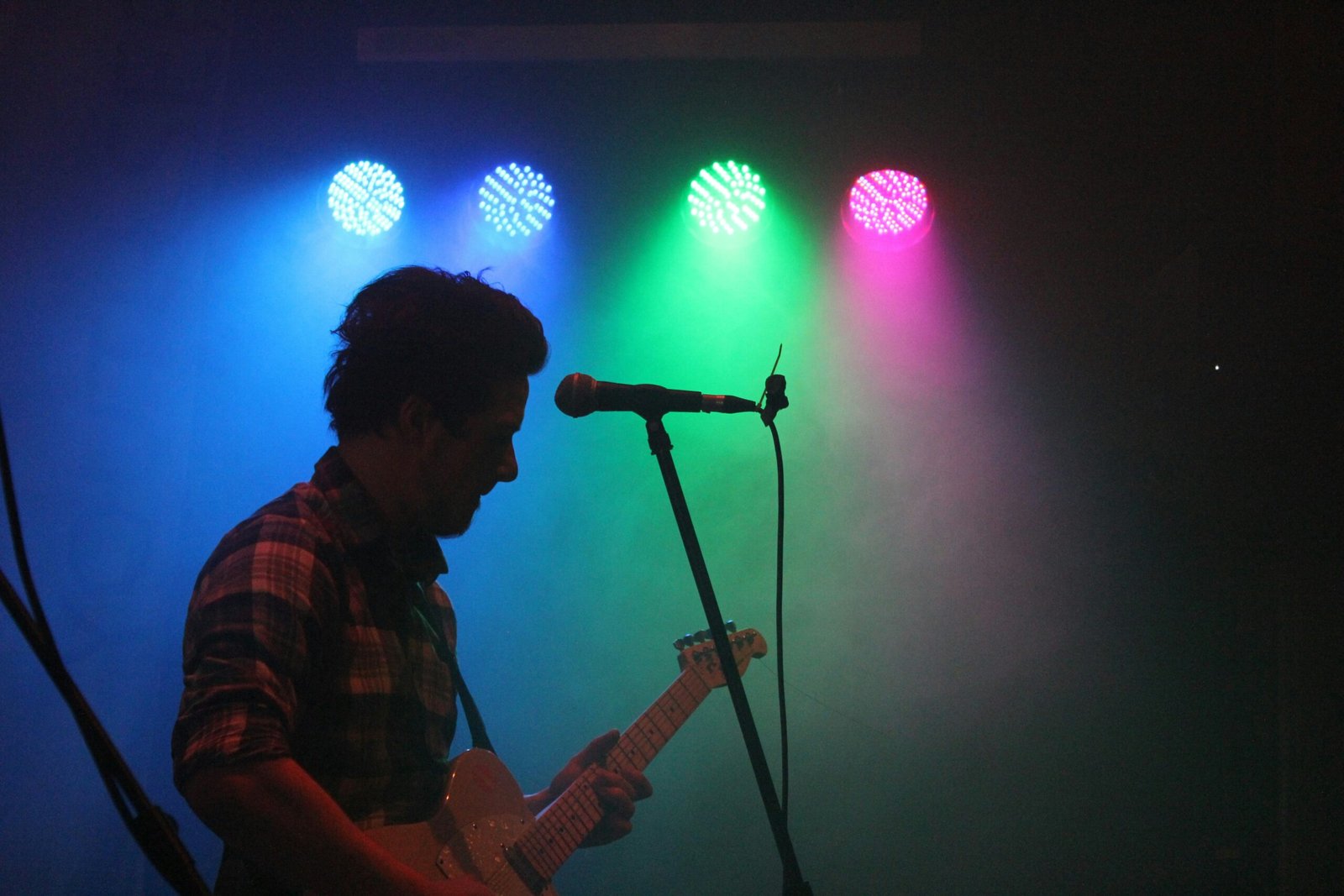Introduction to Clara’s Story
Clara, a gifted graphic designer based in Mexico, has always had a profound connection with art. Her journey through the vibrant landscapes of creativity has shaped her professional identity and personal experiences. However, her life took a drastic turn following a traumatic event that left her grappling with severe anxiety. This overwhelming emotional struggle began to cast a shadow over her once color-filled existence, causing her to question her self-worth and passion for design.
Despite her talent, Clara found herself in a persistent state of anxiety that hampered her ability to work and connect with others. The world of graphic design, typically a realm of freedom and expression, became a source of pressure and self-doubt. The trauma weighed heavily on her, transforming her creative outlet into a battleground fraught with fear about the future. As she sought solace in her artistic skills, it became evident that she needed more than conventional therapeutic methods.
In an effort to reclaim her joy and restore her mental well-being, Clara turned to art therapy. This innovative approach combines the principles of psychotherapy with creative expression, allowing individuals to explore their emotions through artistic means. By engaging in art therapy, Clara began to bridge the gap between her traumatic experiences and her enduring love for art. This journey not only allowed her to confront her anxiety but also provided her with a unique platform to express her feelings and reclaim her identity as a creator.
Clara’s story serves as a powerful reminder of the healing potential embedded within creative endeavors. Through her experience with art therapy, Clara discovered that art could facilitate recovery, uncover emotions, and ultimately lead to personal transformation. Her narrative exemplifies how creativity can serve as a beacon of hope in the face of adversity.
Understanding Anxiety and Its Impact
Anxiety is a complex emotional experience that can affect individuals in various ways, particularly following traumatic events. For those like Clara, anxiety often manifests as persistent feelings of fear or apprehension, which can disrupt daily functioning and overall quality of life. This psychological condition can create an overwhelming sense of worry about future events, leading individuals to feel increasingly isolated. Understanding this emotional response is critical in recognizing how it can stem from traumatic experiences, influencing thoughts, behaviors, and interpersonal relationships.
The symptoms of anxiety are not merely psychological; they can also present physically, resulting in ailments such as increased heart rate, muscle tension, and insomnia. For Clara, the aftermath of her traumatic experience likely heightened her sensitivity to stressors, resulting in an anxious disposition that affected her ability to cope with daily challenges. The psychological burden of anxiety can lead to a negative feedback loop, where avoidance behaviors reinforce the desire to withdraw from situations that elicit fear. This avoidance can limit personal growth and perpetuate feelings of helplessness, further entrenching the cycle of anxiety and emotional discomfort.
In the context of recovery, recognizing the distinct features of anxiety is essential for effective treatment. As individuals navigate their anxiety, understanding triggers and responses can play a pivotal role in creating a pathway toward healing. Various methodologies exist to address anxiety, including therapeutic practices that focus on self-exploration and coping strategies. Creative outlets, such as art therapy, can be particularly beneficial, offering individuals a means to express and process their feelings in a supportive environment. This understanding of anxiety and its effects lays the foundation for discussing Clara’s journey with art therapy as a crucial component of her healing process.
What is Art Therapy?
Art therapy is a form of psychotherapy that utilizes creative processes, such as painting, drawing, and sculpting, to help individuals explore their emotions, improve self-awareness, and facilitate personal growth. Unlike traditional talk therapy, where verbal communication is the primary mode of expression, art therapy shifts the focus to visual art as a means for individuals to express feelings that may be difficult to articulate. This therapeutic approach is grounded in the belief that creativity can serve as a powerful tool for healing.
The principles of art therapy are founded on the idea that the act of creating can foster deeper emotional insights and promote psychological healing. Clients work with trained art therapists who guide them in their artistic expression, making connections between the creative process and their lived experiences. As individuals engage in artistic activities, they are able to confront and communicate complex feelings, ultimately aiding in their comprehension of personal challenges and fostering resilience.
Art therapy significantly differs from more traditional forms of therapy in its emphasis on non-verbal expression. While conventional therapies may rely heavily on dialogue, art therapy encourages individuals to reflect on visual imagery and emotional responses. This can be especially beneficial for those who might find it difficult to communicate verbally due to anxiety, depression, or trauma. By engaging with materials and artistic forms, clients are often able to unlock subconscious thoughts and emotions, providing insight into their inner worlds.
The healing power of creativity is central to the art therapy process. It allows individuals to access and express feelings, leading to improved mental and emotional health. Moreover, art therapy not only aids in addressing psychiatric issues but also cultivates a sense of accomplishment and self-worth. Thus, art serves as an invaluable medium for expression and reflection, reinforcing the therapeutic journey toward healing and personal growth.
Introducing Alex: The Art Therapist
Alex is a seasoned art therapist based in the United States, specializing in the integration of creative expression with therapeutic practices. With a Master’s degree in Art Therapy from an esteemed institution, he has dedicated his career to helping individuals navigate their emotional and psychological challenges through the medium of art. His work encompasses various populations, including those facing trauma, anxiety, and depression, highlighting his commitment to fostering healing through creativity.
His approach to art therapy is rooted in a client-centered philosophy. Alex believes that art-making offers a unique avenue for self-exploration and emotional release. By guiding participants to use various materials—such as paint, clay, and collage—he encourages them to express feelings that may be difficult to articulate verbally. This methodology not only facilitates communication of internal experiences but also enhances self-awareness and promotes healing.
Alex’s workshops are characterized by a safe and nurturing environment, where participants feel empowered to explore their creativity without judgment. He emphasizes the importance of the process over the final product, allowing individuals like Clara to focus on their emotional journey rather than artistic skill. This perspective is pivotal, as it helps attendees recognize that the act of creation itself is therapeutic, regardless of the outcome.
The significance of Alex’s approach to art therapy is profound. By integrating psychological principles with artistic expression, he creates a holistic experience that addresses both mental health and personal growth. Participants are not only encouraged to produce art; they are invited to delve into their inner worlds, fostering connections between emotions and creative output. This holistic dynamic is essential in making art therapy a powerful tool for transformation and healing.
Clara’s First Day at the Workshop
As Clara stepped into the softly lit art therapy workshop, a palpable mix of emotions surged through her. The atmosphere was filled with the subtle scent of paint and paper, combined with the gentle chatter of fellow participants who were engaging in their creative endeavors. Yet, amidst this vibrant ambiance, Clara felt a profound sense of uncertainty. This was her first foray into art therapy—a realm that promised healing through creativity, yet surfaced layers of vulnerability she was unprepared to confront.
Clara’s heart raced as she observed the others. Some were laughing, immersed in discussions about colors and techniques, while others were lost in their own worlds, expressing a wealth of emotions through their artwork. It was a stark contrast to her own internal monologue, which echoed self-doubt and trepidation. Would she be able to express herself? Could she find a way to translate her feelings into art? These questions swirled in her mind, highlighting her insecurities and apprehensions about the process ahead.
Despite the initial discomfort, Clara was also intrigued. The promise of art therapy resonated with her desire for self-discovery and healing. She recalled reading about the transformative power of creativity and how it could serve as a therapeutic outlet for internal struggles. This thought provided a glimmer of hope as she settled into her designated space, surrounded by an array of art supplies, each one a potential key to unlocking her hidden emotions.
As the workshop facilitator welcomed everyone, Clara attempted to quiet the inner critic that clamored for her attention. Listening attentively, she recognized that many participants shared similar feelings of anxiety. This realization began to forge a tentative connection between her and the others, easing her initial sense of isolation. Clara took a deep breath, ready to embark on this artistic journey towards healing.
Exploring Different Art Forms
Throughout her artistic journey, Clara delves into a variety of art forms, each offering distinct avenues for self-expression. From painting to sculpture and collage, these mediums not only stimulate her creativity but also serve as therapeutic tools, enabling her to navigate her emotional landscape. Clara begins with painting, which allows her to immerse herself in color, texture, and form. The process of mixing pigments gives her the freedom to convey feelings that are often difficult to articulate verbally. The fluidity of paint encourages spontaneity, leading Clara to create pieces that reflect her inner turbulence and joy alike.
As Clara transitions into sculpture, she discovers a tactile dimension to her creativity. Working with clay and other materials enables her to mold her emotions physically, transforming abstract feelings into tangible forms. This three-dimensional medium provides a new perspective on her experiences, allowing her to confront challenges from various angles. The act of shaping and forming also introduces an element of grounding, offering Clara a sense of stability amid her emotional exploration.
The collage becomes yet another significant form in Clara’s artistic repertoire. This mixed-media approach allows her to combine various elements—text, photographs, and found objects—creating narratives that resonate with her experiences. Each layer of the collage symbolizes different aspects of her emotions, enabling her to view her journey as a whole. By juxtaposing contrasting images and ideas, Clara learns to embrace complexity, ultimately fostering a deeper understanding of herself. Through these diverse artistic practices, Clara cultivates a rich tapestry of creativity that nurtures her healing process.
The Transformative Power of Creativity
Clara’s journey through art therapy unfolds as a testament to the profound impact creativity can have on personal healing. Initially, she grapples with feelings of isolation and helplessness, emotions that seem insurmountable. However, as she begins to express herself through various artistic mediums, a remarkable transformation takes place. The act of creating becomes a vehicle for self-discovery, allowing Clara to confront and articulate feelings she previously struggled to understand.
Engagement in the creative process offers Clara a safe space for emotional exploration. Each brush stroke and color choice reflects her internal landscape, revealing deep-seated fears, hopes, and aspirations. By embracing creativity, she experiences pivotal breakthroughs, allowing her to process emotions that were once locked away. This healing pathway not only fosters emotional release but also cultivates resilience, empowering Clara to reinterpret her narrative in a more positive light.
The therapeutic benefits of creativity extend beyond mere emotional awareness. Through art therapy, Clara develops an enhanced sense of self-worth and agency. The ability to create something meaningful instills her with a newfound confidence that permeates other aspects of her life. This evolution is marked by a growing willingness to confront challenges, seek connection, and embrace vulnerability.
Moreover, the communal aspect of art therapy provides Clara with valuable social support. Engaging with others in a shared creative endeavor fosters a sense of belonging and reduces the feelings of loneliness that plagued her earlier. The collective experience further highlights the importance of creativity as a means of connecting with others, enhancing its therapeutic value. Clara’s journey underscores how the transformative power of creativity can serve as a catalyst for emotional healing, proving that the arts hold significant potential in therapeutic contexts.
Clara’s Personal Growth and Reflection
Throughout her participation in the art therapy workshop, Clara experienced profound personal growth that reshaped her understanding of anxiety and coping mechanisms. Initially, she approached the program with skepticism, unsure of how engaging in artistic activities could assist her in managing her anxieties. However, as she immersed herself in the creative process, she began to witness remarkable changes within herself.
Clara discovered that expressing her feelings through various art mediums allowed her to articulate emotions that often felt overwhelming. The vibrant strokes of paint or the delicate arrangements of clay not only served as an avenue for expression but also acted as a therapeutic release. This embodiment of feeling transformed her anxiety into visual narratives, which she could examine and understand from a different perspective. With each session, Clara found herself reflecting deeper on her thoughts and emotions, revealing layers of discontent she had previously buried.
Another pivotal aspect of her journey was the sense of community established during the workshop. Interacting with fellow participants fostered camaraderie that contributed to her healing. Sharing experiences and insights in a safe environment dismantled feelings of isolation. Clara realized that she was not alone in her struggles, and this realization played a significant role in reducing her anxiety. The feedback and encouragement from peers also nurtured her self-esteem, inspiring her to explore her artistic capabilities with newfound confidence.
As Clara continued to engage in art therapy, she found herself adopting alternative coping strategies that went beyond traditional methods. With her art pieces reflecting her emotional landscape, she learned to navigate her anxiety with a more compassionate approach. Ultimately, this journey through creativity allowed her to embrace vulnerability and foster resilience, leading to enriched personal growth and lasting change. Clara emerged from the workshop not only as an artist but also as an empowered individual who is better equipped to handle her anxiety.
Conclusion: The Lasting Impact of Art Therapy
Clara’s journey through art therapy has illuminated the profound influence that creative expression can have on emotional healing and personal resilience. The transformative power of engaging with art allowed Clara to confront her trauma in a safe and supportive environment. As she immersed herself in various artistic activities, she found not only a medium for self-expression but also a pathway to understanding her emotions more deeply. This therapeutic experience facilitated a methodical exploration of her feelings, enabling Clara to articulate her pain in ways that words alone could not convey.
Art therapy serves as a bridge between the conscious and unconscious mind, helping individuals like Clara to unlock hidden aspects of their psyche. This journey is not merely about creating art; it is about using creativity as a healing tool to foster a sense of agency and empowerment in the face of adversity. Through her artwork, Clara gradually developed a stronger sense of self and began to see her experiences not just as sources of pain but as integral parts of her narrative that contributed to her growth.
The lasting impact of art therapy extends beyond the individual, influencing relationships and community connections. As Clara shared her experiences and insights with others, she became a source of inspiration for peers facing similar challenges. This shared creative process can cultivate a supportive environment, encouraging mutual healing among participants. Ultimately, Clara’s journey is a testament to the idea that creativity can serve as a vital resource for healing, resilience, and transformation. It highlights art therapy’s invaluable role in the recovery process, showing that through creativity, individuals can reclaim their narratives and foster lasting change in their lives.



















No Comments
Leave a comment Cancel